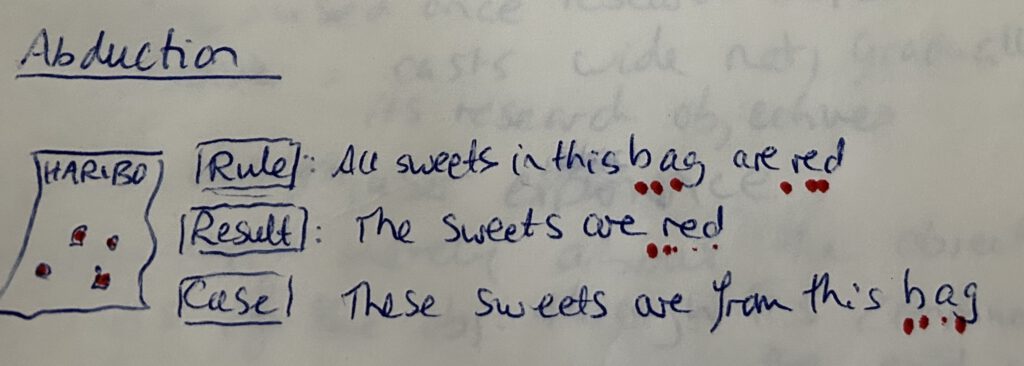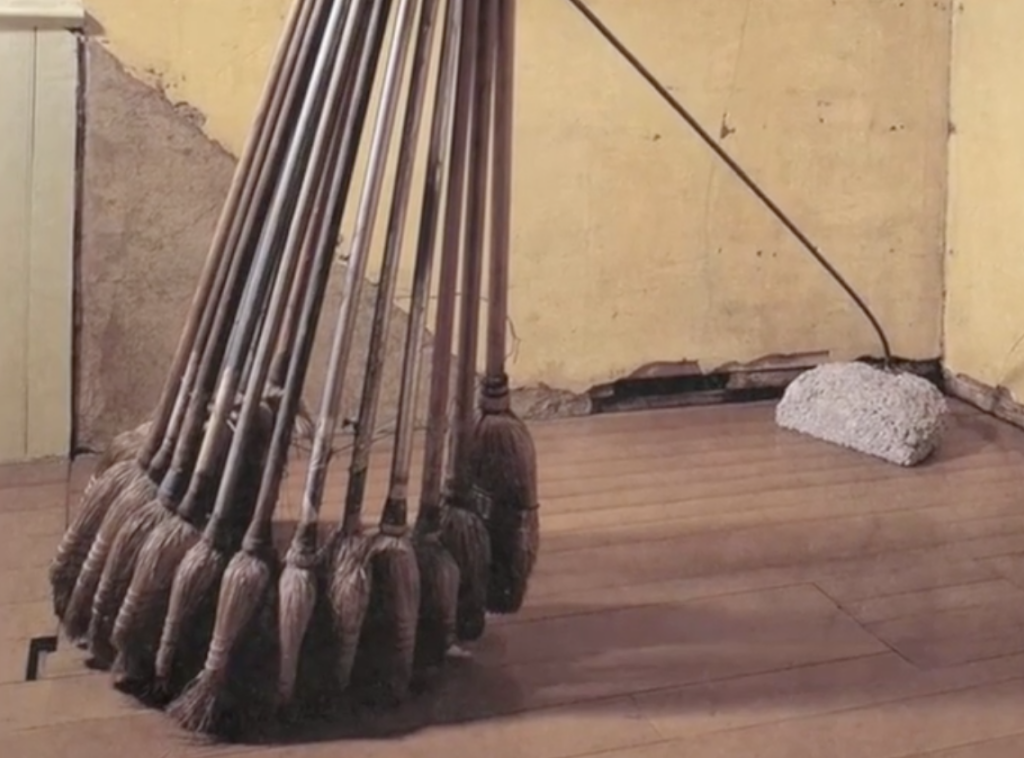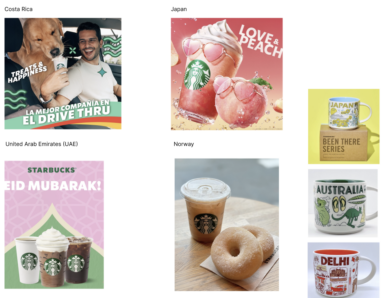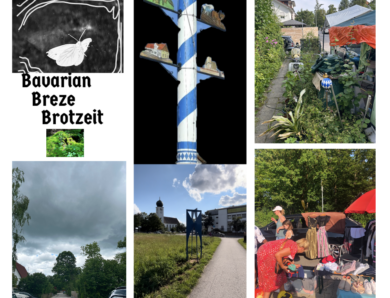
Week 7
Research material1
Research is a human process similar to curiosity, and at the center of research is knowledge. Philosophy looks at how knowledge is categorized:
- metaphysics -> sense of reality, nature of being
- aesthetics -> nature of beauty -> perception
- ethics -> e.g. morality, judgement
- epistemology -> theory of knowledge itself -> important when it comes to (design) research
Epistemology
- What must be added to a belief to convert it into knowledge?
- Designer as reflective practitioner



How much one knows about the theory related to a project at the beginning influences whether research should be deductive, inductive, abductive, or both
deduction:
-> research and researcher need to remain objective
-> often used if enough data exists
inductive:
-> context is important
-> often used when new/subject/little data existing
abductive:
-> incomplete set of observations; find simplest, most likely explanation
Research methods
The methods of academic research describe a process to collect info systematically. The two main methods are qualitative and quantitative research. The first one is to understand human behavior from the researcher’s perspective and to observe the dynamic reality. The second is to discover facts in a fixed and measurable reality.
Qualitative research methods include e.g. focus groups, interviews, and ethnography.
Design ethnography is a research method, with origins in anthropology(=study of human behavior). It includes in-depth observation of people’s behaviors and beliefs by observing and interacting in their natural environment. According to Michel de Certeau every person can be seen as a producer of their lifestyle through the art of recycling objects or adapting and transforming readymade products.
The interaction of qualitative and quantitative studies within research is a “dance of expansion and contraction of possibilities, but always moving towards an optimised design”.2
Design does not exist in a vacuum, but is a part of a larger historical & cultural process
(John W. Crestwell)
What makes a good research question?
- must be relevant
- craap test: currency (up-to-date), relevance (research area), accuracy (reliable), authority (source/author), purpose (reason for its existence)
- is manageable (access source data etc.)
- is substantial & original (imaginative abilities etc.)
How do you approach research methodologies for your academic journey?
Areas to consider are a sense of curiosity, universal knowledge which we can draw upon as humans and research as an active, engaging practical act.
Research task: Explore the ways in which designers and artists have built personal collections of items that fascinate them. Look at historical and contemporary examples.
Nowadays many artists have their instagram pages, where they share their current projects, insights into research or just an image of a moment in their life (for e.g. Rachael Champion). Another way is to showcase sketchbooks like Victoria Cantons is doing it on her personal website. Her sketchbook includes all kind of ideas that come to her mind.
Jonathan Trayte on the other hand “has a ring binder of laminated labels that he’s collected on his travels”3
Artist David Ireland4 believed that everything is art. Once he got a bread from a german friend and hung it on a wall. When he moved into his house the previous owners had left several brooms and he decided to arrange them clockwise to show the lifecycle of a broom of being bought and thrown away.

Old brooms arranged clockwise5- Design research: methods and perspectives (Brenda Laurel), Creative research: the theory and practice of research for the creative industries (Hilary Collins),
Chapter 1 Why and How in Visual research: an introduction to research methodologies in graphic design (by Ian Noble; Russell Bestley) ↩︎ - Overview Quantitative Methods in Design Research (Stacey Purpura, p. 68) ↩︎
- https://www.artsy.net/article/friedman-benda-promiscuous-consumption-inside-jonathan-trayte ↩︎
- https://www.sfmoma.org/read/whatever-you-have-artists-find-inspiration-in-everyday-objects/ ↩︎
- Screenshot of video of 2001 interview conducted by the Regional Oral History Office in David Irelands house (https://www.sfmoma.org/read/whatever-you-have-artists-find-inspiration-in-everyday-objects/) ↩︎





No Comment